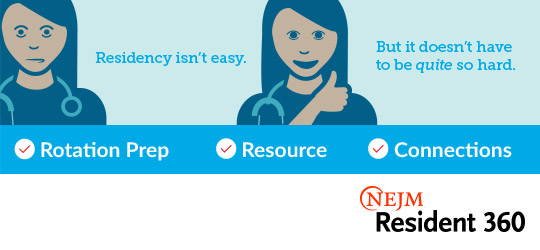July 1st, 2020
Dual Crises and the Call for Resident Unionization
Eric Bressman, MD

Dr. Bressman is a Chief Resident in Internal Medicine at Icahn School of Medicine at Mount Sinai in New York, NY
On March 20th, as the chaos of the unfolding pandemic enveloped New York City, Governor Cuomo issued Executive Order 202.10, which, among other directives, temporarily suspended work hour restrictions for medical residents in New York State. These regulations, which had been enacted 30 years prior, were the consequence of the journalist Sidney Zion’s well-publicized crusade to investigate the tragic death of his daughter Libby at New York Hospital in 1984, which he attributed to the mistakes of overworked and under-supervised residents (N Engl J Med 1988; 318:771). A grand jury was convened, and although it did not indict any of the physicians involved in Libby’s care (as Zion had hoped), it did, in effect, issue an indictment of graduate medical training in the U.S. Depending on who you asked, it was either an educational system intentionally designed around long hours and self-sacrifice or exploitation of cheap labor at the hands of hospitals.
The grand jury’s recommendations, along with the subsequent Bell Committee report, paved the way for resident work hour limits as we know them today. Revisiting the literature from that time, it is clear that a campaign for reform that was sparked by concerns over patient safety, was in equal measure driven by concern for resident wellbeing (N Engl J Med 1988; 318:775). In the ensuing decades, we would begin to recognize that these parallel concerns were interconnected (BMJ Open 2017; 7:e015141).
This movement for reform, however, didn’t start with the Libby Zion case, and it didn’t end with the institution of duty hour limits. In 1975, the house staff of Cook County Hospital in Chicago went on strike for 18 days after months of dead-end negotiations. They successfully earned a (modest) pay increase and a reduction in their work week from 100 to 80 hours, by decreasing the frequency with which they had to take overnight call to 1 out of every 4 nights rather than every 3.
Students or Employees?
This was not the first organizing activity by residents, but it garnered the most publicity, and it fueled a debate that continues to this day: Are residents students or employees? In 1976, in the wake of the successful strike in Chicago, the National Labor Relations Board ruled that residents were in fact students, denying them the protections provided under labor relations laws, including the right to form a union. In their interpretation, residents’ primary purpose was to gain further training and skills, as evidenced by the many conferences, lectures, and rounds in which they partake. Their direct patient care is simply a means of learning, and their pay is nothing more than a living stipend.
It took 22 years for this ruling to be overturned, in a similar case involving house staff at Boston Medical Center. While not much had changed in the merits of the competing arguments — residents were still labeled with an intermediate status of “student-employees” — the environment clearly had, perhaps aided by the optics of two residents being tried for malpractice on a very public stage in the Zion case. Despite this decision, approximately 15% of house staff nationwide are currently represented by the Committee of Interns and Residents — the country’s primary house staff union — and the “student versus employee” argument continues to be litigated.
The Reality
 COVID-19 came along and laid bare what had long been obvious to most observers: Residents might be learners, but they are — first and foremost — employees, and essential ones at that. As the tidal wave of the pandemic engulfed many teaching hospitals, the presentation of lectures, conferences, and most other formal teaching activities necessarily ground to a halt, and fears of a depleted workforce compelled suspension of various limitations that traditionally protect residents from being overworked. New York State, as noted above, lifted work hour restrictions. The ACGME, to their credit, insisted on preserving work hour limits, but suspended most other restrictions, including limits on the number of patients a single resident can care for at a given time.
COVID-19 came along and laid bare what had long been obvious to most observers: Residents might be learners, but they are — first and foremost — employees, and essential ones at that. As the tidal wave of the pandemic engulfed many teaching hospitals, the presentation of lectures, conferences, and most other formal teaching activities necessarily ground to a halt, and fears of a depleted workforce compelled suspension of various limitations that traditionally protect residents from being overworked. New York State, as noted above, lifted work hour restrictions. The ACGME, to their credit, insisted on preserving work hour limits, but suspended most other restrictions, including limits on the number of patients a single resident can care for at a given time.
In the wartime language that has become popular during this pandemic, hospitals formed “deployments,” and the backbone of the “front line” was undoubtedly the residents, working alongside their nurse practitioner and physician assistant colleagues. The difference was that their fellow soldiers had pre-existing collective bargaining agreements, with arrangements for overtime pay and channels to negotiate hazard benefits, whereas most residents were left to hope for the good will of their employers, with varying results.
The Imperative
The pandemic has highlighted not only the right of residents to organize, but also the necessity. As employees, residents are the very definition of vulnerable. During the recruitment process, they are deprived of any negotiating power by the Match, which precludes multiple offers and the leverage that comes with this. And, at the end of the day, they need the hospital more than the hospital needs them. Whereas other employees who are dissatisfied with working conditions, benefits, or other aspects of their jobs have the freedom to quit and seek employment elsewhere, residents need to finish out their program in order to receive certification and licensure, and the process of seeking a new position can range from onerous to impossible. When a crisis hits, as we just learned, working conditions can change dramatically overnight, with no obligation on the part of hospitals to adjust benefits or pay.
This is the most straightforward function of unions — giving a seat to the disenfranchised at the negotiating table — but historically, this has not been their only role. During the 1975 strike in Chicago, residents advocated not only for themselves, but also for their patients. They successfully negotiated patient protections, including readily available Spanish interpreters. In the ensuing years, the need for translation services has been recognized as so fundamental as to have been written into law in various patients’ bills of rights.
As a disenfranchised voice, residents have long been a voice for the disenfranchised. For a number of reasons, they have generally seen the injustice and inequity in our healthcare system earlier and more clearly. For one, they are not beholden to the financial structures that are very often the driver of these disparities in care. They are also on the ground, directly interfacing with patients of all backgrounds and in multiple contexts, and witnessing the kind of stratified care that has long been the norm in our healthcare system — one clinic for the privately insured, another for those on Medicaid, and a third for the uninsured. They are the only substantial part of the physician workforce that might split their time between private and public hospitals. This unique perspective helps them put the lie to the notion of separate but equal care.
There are many reasons health systems have historically resisted house staff unionization. It is far more convenient to present the terms of a contract than to negotiate them. There might be some discussion, but there is no need for lawyers or mediators or endless bargaining sessions. As short-term employees, residents are often viewed as interlopers at the policy-making table, not necessarily having the long-term interests of the institution at heart. There are fears, of course, of work stoppages, although these are rare (Chest 2014; 146:1369) and as anathema to residents as they are to administrators.
At this turbulent moment, however, as we grapple with the dual crises of an ongoing pandemic and the infrastructural racism that pervades every layer of our society, including the healthcare system, there has never been a more important time to empower the voices of residents. They are needed to help navigate a path toward greater justice — for themselves and for their patients. The only way to legitimize that voice, to give it a strength that cannot be ignored, is through collective action. The environment is primed for it; the moment demands it.



Thank you for your opinion. Although there is inequality within the access to healthcare, it is based on financial inequality and not on race and usually lies within the access to specialties within medicine and the ability to obtain medications. In our system no one is turned down for emergency services and in fact many people use the ED for primary care (I know this because I am an EM physician). This is a complex issue too difficult to discuss in a short reply, but really has nothing to do with residency unionization or the color of your skin. As far as unionization, be careful for what you ask for. Residency sucks and is a time for learning without fear of financial malpractice punishment, unless you are careless and perform outside or your scope. To me residency was a time of learning work ethic, a variety of skills to make me a better physician, and time management in a safe environment. If you feel as though you are an employee and should have the same say as other employees, I am all for it, but you should be prepared to take on the same responsibilities (legally and financially) as other employees. Furthermore, if your attending physicians placed you in an unsafe frontline situation, then you and your fellow residents should have simply said no and not performed or called in sick and brought this to the attention of everyone who would listen, including the news networks. Any attending and residency worth the time and effort to attend would never put their students in harms way; their employees, well that is a different story.
“Furthermore, if your attending physicians placed you in an unsafe frontline situation, then you and your fellow residents should have simply said no and not performed or called in sick and brought this to the attention of everyone who would listen, including the news networks”
What you are describing is collective action. Which is what a union supports by lowering the barrier and decreasing the repercussions.
Your argument regarding financial and legal responsibility holds less water in the era of PAs and NPs who effectively receive 4x a resident salary (based on vacation + days off + salary) with similar legal responsibility
In response to Michael:
1. BIPOC are poor because of racism. They experience worse care because of racism and poverty. Put bluntly, when physicians are less racist they take better care of BIPOC. This isn’t an opinion; there is established medical literature to demonstrate this.
2. The fact that an emergency department can’t turn away BIPOC does not mean a system can’t be racist or lead to worse health outcomes based on race. What about public health? What about discriminatory employment, education, and housing practices which affect a patients Current or future ability to gain insurance? What about primary care? What about the decisions that are made at triage? After the patient is roomed? When the patient is discharged? As an EM physician I hope you have the humility to acknowledge that high value healthcare doesn’t begin and end at the ED entrance.
3. As a member of a resident union for 5 years and counting, none of the things you fear make much sense to me. responsibility commensurate with my role? As stated in the article, regardless of whether I’m unionized I still need malpractice insurance and am a critical worker for my patients. I’m not going to be falsely humble—my colleagues are some of the hardest workers in the hospital and we take our jobs seriously. The system had already been using us as workers but refusing to treat us that way; they had no incentive to do so. We took on that responsibility decades ago; it’s time for hospitals to recognize that and meet us at the table in an honest way. I’ve had nothing but positive experiences as a unionized resident and I hope more people pursue this. It is work but it is worth it.
Re: racism in healthcare, “Unequal treatment“ while old is a great overview and may lead to more study in healthcare disparities if you are interested.
Michael, with all due respect, the ethos of closing comment to the author speaks the very heart of his argument that residents are the very definition of a vulnerable group. What would happen, as you propose, if they simply said no and not performed or called in sick and brought this to the attention of everyone who would listen, including the news networks? Maybe a public outpouring of support for the individual. Doubtful. I see it more likely that they would face being terminated for insubordination and in doing to effectively become blackballed from the entire profession. What chance would that resident physician have to re-match to a competitive program after that action? Slim to none. Rather than risk derailing a decade or more of hard study and sacrifice, not to mention the six figures of debt most of them hold , more likely the endangered resident will keep their head down and mouth shut, report to the front lines without adequate PPE and thereby risk their friends and family’s lives as well as their own. The power dynamic is so heavily weighted against the resident it is unreasonable to expect them to do anything else. Hence the essential need for a union, to advocate for that vulnerable individual doctor’s right to a safe work environment.
Also your closing statement that no residency worth the time to attend would put their students in harms way — I would like to agree — however the reality of the past 5 months has provided myriad examples to the contrary. All across NY/NJ/NE, we pressed on our house staff into heavy frontline service without adequate protection. We even went as far as to promote medical students to interns early and relaxed supervision of them. The same is now happening in FL, TX, AZ and elsewhere. To their credit, these young doctors have answered that call bravely and with the utmost professionalism and sense of duty to their patients and community. We owe them much much more. At the very least we owe it to them to have a union representative be allowed a seat at the table to advocate their case without fear of reprisal.
I am in total agreement with what you say. No resident will ever think of not obeying his seniors or attending(s). Residency is not really tough but has been traditionally used as cheap slavery with all kinds of abuse with no protection from anyone. Sadly, the same doctors who advocate for good sleep, exercise, entertainment and nutrition for the general public, ignore all the recommendations when it comes to future doctors. I call it the ‘mother-in-law’ syndrome as the residency program mafia continue to impose hardship on their residents just because they had to endure it when they were themselves residents. That this happens only in Medicine world is a matter of shame. No sane profession will do that but then, this profession is no longer for the sane.